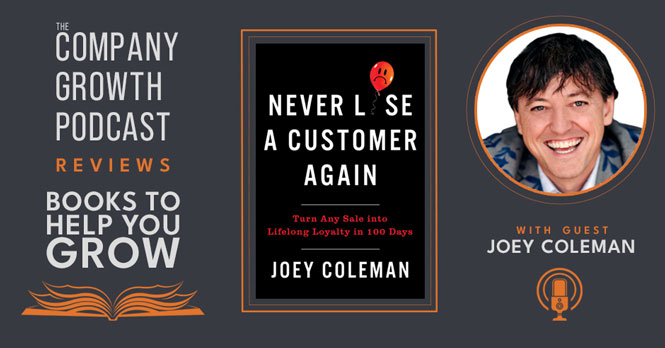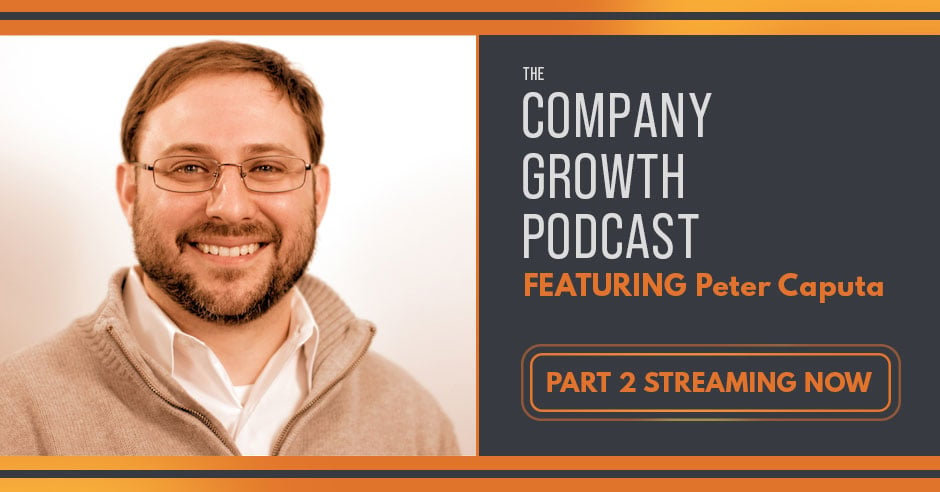SHARE
Customer Journey Map for Your Company Growth

In this podcast episode, Dylan Wickliffe (HubSpot, Channel Account Manager) and I talk about the importance of a Customer Journey Map - whether you’re a start-up, a growing company - or STUCK - this will help your company grow.
The Company Growth Podcast: Customer Journey Map for Company Growth
To follow up on the conversation in this Company Growth episode, I wanted to dig deeper into some of the topics you might have felt we glossed over or that you wanted to revisit more slowly.
No matter where you are at right now with your company - surviving, growing, adapting - or STUCK - these tips will help you gather what's most important about your work and get ready to sharpen your sword.
Key points From The Company Growth Podcast on Customer Journey Mapping:
-
The Customer Journey Map is critical because you need to be able to appreciate what your customer or prospect has been through recently in their interaction(s) with your brand. That will tell you where their head is at when they’re just meeting you or just continuing to learn about you. This flows into the next point.
-
Visibility. If you can’t see what interactions a prospect or customer is having with your brand - it’s nearly impossible to guess where they’re at in their understanding of your company or organization. Fortunately, in this day and age nearly all brand touchpoints and interactions happen digitally. Even phone calls and notes on those calls (whether you got a voicemail, or left a live message, or connected) can all be logged on even the free version of something like HubSpot’s Forever Free CRM. So there is no reason not to be logging these 1:1 touchpoints for everyone else on your team. Sharing that data about those 1:1 interactions means everyone has the ability to know how you are (or maybe how you aren’t) taking care of your prospects or customers. (Wouldn’t you rather know, than not know?) With logging - comes the ability to analyse…
-
BONUS: ANALYZE. When you have great tools (like, my favourite, HubSpot Sales Pro!) you can track things like how many touchpoints it takes to close a Deal. Tangible Words uses this info with our clients to help them make sure they’re hitting the minimum number of contact points (because sometimes the gap in the Close Rates - particularly in the B2B space where we work - is that Sales Reps are giving up too soon). But it's also an important metric for consistency and uncovering what works. What I also like about tracking each interaction with a customer is that you can analyse other info like where prospects are dropping out of the pipeline, or how to make the Customer Lifetime Value (CLV) higher. (Increasing CLV is one of my favourite things to do for a company and a Customer Journey Map is certainly a critical step in the process of improving that - it's as important, if not more, than Persona Development.) I also like to use this same data set we’re talking about to lower the cost of Customer Acquisition. When we track the contact points we can deduce where there might be waste, or how we might use other tools (e.g. chatbots; automation) to help the customer along faster and better - but without the expense of human resources every time.
Emails, webpages, forms, blog posts, social media, service tickets - all these details are only worth collecting if you are going to use the data to take better care of your prospects or customers.
Of course most companies are not tracking all of this data in one place which makes it very hard to analyse across the Customer Journey Map. So the first step is to get that tracking in place so you can develop a benchmark for your data and set goals you want to work towards - and develop the plan to hit those goals.
And believe me - you absolutely MUST be using that data to treat customers or prospects BETTER. Any company who isn’t using the data for the greater good of their customer is quickly sniffed out from the first greeting of a phone call as solipsistic, and self-serving. (We’ll cover the importance of your opening statement in phone calls in a later podcast this season - look for the episode with Dan Tyre from HubSpot, a personal hero and mentor of mine.)
You need to know that your reps are going to get Millennial Cookie Dunked again and again if they don’t start their calls in a helpful and caring way.
Hey! Is your reps’ success with unscheduled calls super low? Do you know what a Millennial Cookie Dunk is? (Yes, I made up the name but as soon as you hear the definition in this Company Growth Customer Journey Map podcast - you’ll recognize the situation exactly. Listen here.)
So for all this talk about using data to better serve our customers leads me back around to another topic Dylan and Alysha got into: silos.
Why Silos between Company Departments Are So Horrible
You need alignment between your departments. Silos between Marketing, Sales and Service lines of your business are BAD for business.
Here are at least 3 reasons why you need to share information between departments:
-
Company/Organization Goals Become Unclear To Everyone
-
Tracking of Goals and Contributions To Goals Are Unclear
-
Your team will not know how to prioritize and celebrate their success - which is critical for morale - without tracking.
-
Sharing Success and Customer Data with your team helps the customer BETTER.
-
Helping your customers better by tracking their interactions with your company is possible. And ultimately if you aren't being customer-centric with their data in 2020, your customers will slowly or quickly leak to your competitors - who will be. Using data maliciously or for your own reasons makes you exposed. You’re vulnerable if you’re not putting your customers first. You can’t really use their data in this intelligent way though if you don’t know the steps on a journey a prospect and customer take with you (hence why this episode was about the importance of a customer journey map!) (Yes, we’ll do another episode this season on why collecting customer data is better for the customer!)
All of these things on the list above add up to you not growing your company as well as you could. And here’s more.
One of the first places I like to start with companies who come to Tangible Words to grow is to start with their revenue planning. You have to know where they are, and that they want to grow. If you don’t know the growth targets - how can you assess the plans you’ve made, or make plans to hit that growth? Yet so many times, this information is siloed away from the people who are charged with getting these results.
I’m not interested in working with someone who just wants me to take their money and do what they say - and if you’re an employee in a situation like that, I think you should make that clear too. That’s a transaction - it does not lead to transformation or growth. In fact, it’s downright dangerous - that “do what you tell me without question” means you can end up where you don't want to end up in the end. If you’re a Millennial raising your fist in full agreement with this - just make sure you ask questions respectfully :)
Instead we need to look at goals, targets and current plans. Maybe you don’t need to spend more money or make new plans - or get a new website - maybe just you need to fix or finalize or commit to what you’re already doing. Don't feel like you have to follow the path that other people follow - follow the path that suits your growth goals.
Without a discussion about growth, your ability to transform and be ready for growth is off the table.
Companies who want to grow (really) are looking to transform. They recognize that what they’ve done so far is amazing but has not got them to the level they want yet, so they are hungry for new ideas and people. They don’t want to do the same ol’ same ol’ thing because “We’ve always done it this way,” as Dylan points out in this episode. Because, that old way might not work anymore.
And this takes us back full circle in logic to the…
The Importance of the Customer Journey Map
Map out each step based on your goals - who you’d like to target and how much you’d like to make from each group of targets is front and centre when you begin to layout your map.
But like a good copywriter (shout out to Tangible Words’ roots!), you’ve got to stop thinking about what you want and think about what your prospects and customers want. It's easier to do this once you have your targets and prospect/customer stages laid out.
The stages a prospect goes from being cold about your company to being in love with your organization - that’s goes into the Customer Journey Map. It's all about the person outside of your company.
The Customer Journey Map is all about what the prospect and then the customer want from you at each stage of their buyer’s journey.
The messaging and subsequent soundbyte content assets and infrastructure, or tools you need to build are in direct response to the needs of the people you serve.
The art of the customer mapping process is to put a system in place to make all of those tools you need created - so that the Map does not become shelf-help.
No one needs to rely on remembering each step of the Map, you build a system to remember it for you. This is what Dylan meant about using automation and letting the prospect/customer self-serve.
So you’re not totally without control - you’re shaping a path of best-fit customers, and you’re providing the opportunity for purchase by taking care of your customer and prospect better.
Want HubSpot's best in class Free CRM & more awesome tools?
It's better than what you've seen before anywhere else for free. Check it out:
Topics
- Content Creation (297)
- Growth-Driven Design Websites (166)
- Inbound Marketing (139)
- Sales Growth (123)
- Tangible Words (111)
- Search Engine Optimization (85)
- Social Media Marketing (83)
- Blogging for Business (75)
- Hubspot (72)
- Economic Development (64)
- Events & Training (60)
- Company Growth Podcast (49)
- Manufacturing (47)
- Tourism (46)
- Email Marketing (41)
- Case Stories (39)
- Testimonials & Client Feedback (36)
- Education and SaaS (23)
- Google (21)
- Careers (18)
- Inbound Marketing Agency (17)
- FAQ (16)
- Cool Companies (15)
- Alysha Dominico (13)
- Associations (7)
- Food and Beverage (7)
TW Blog Sign-Up
Learn more about how to grow your business and improve your sales team process.









